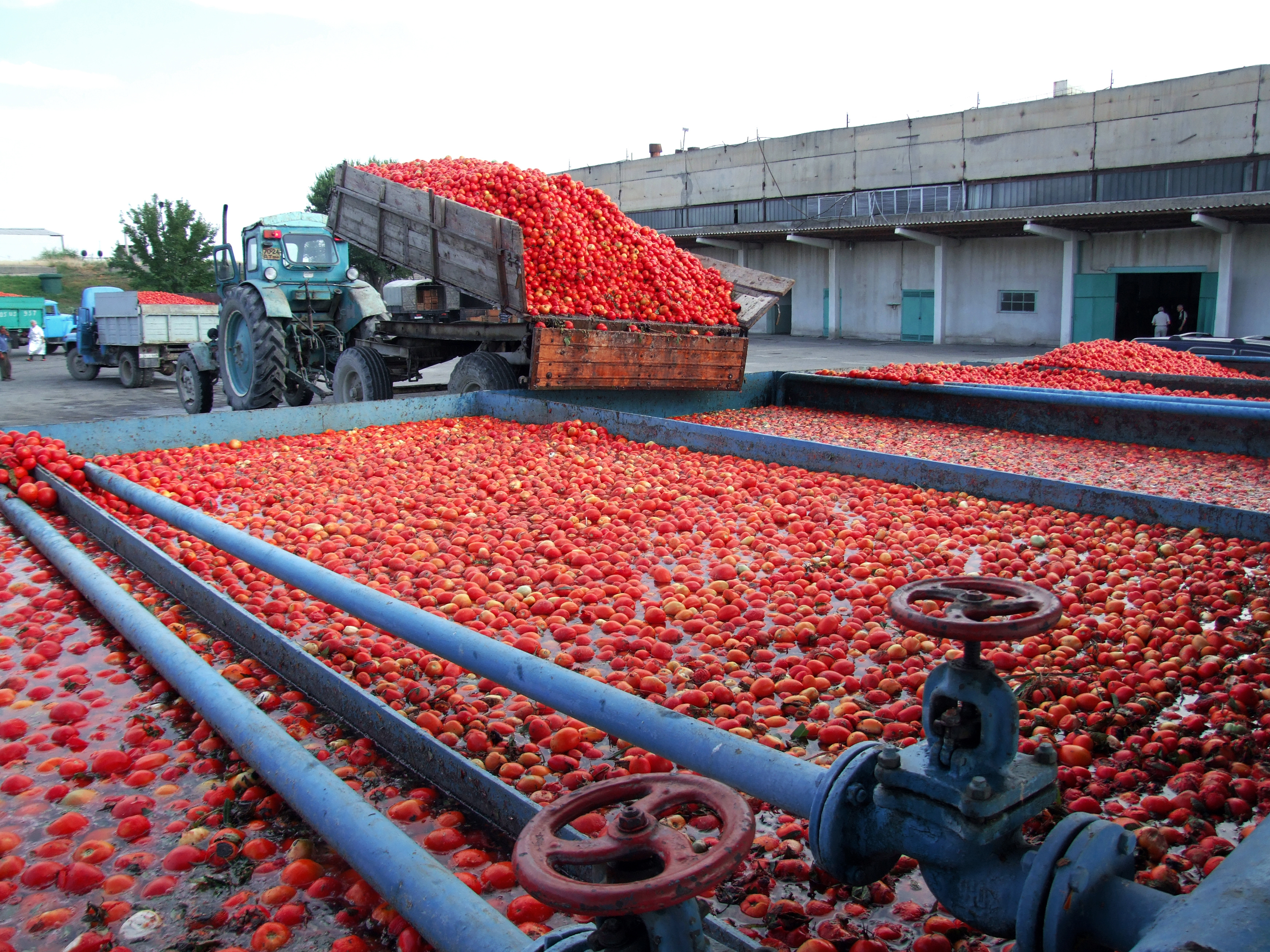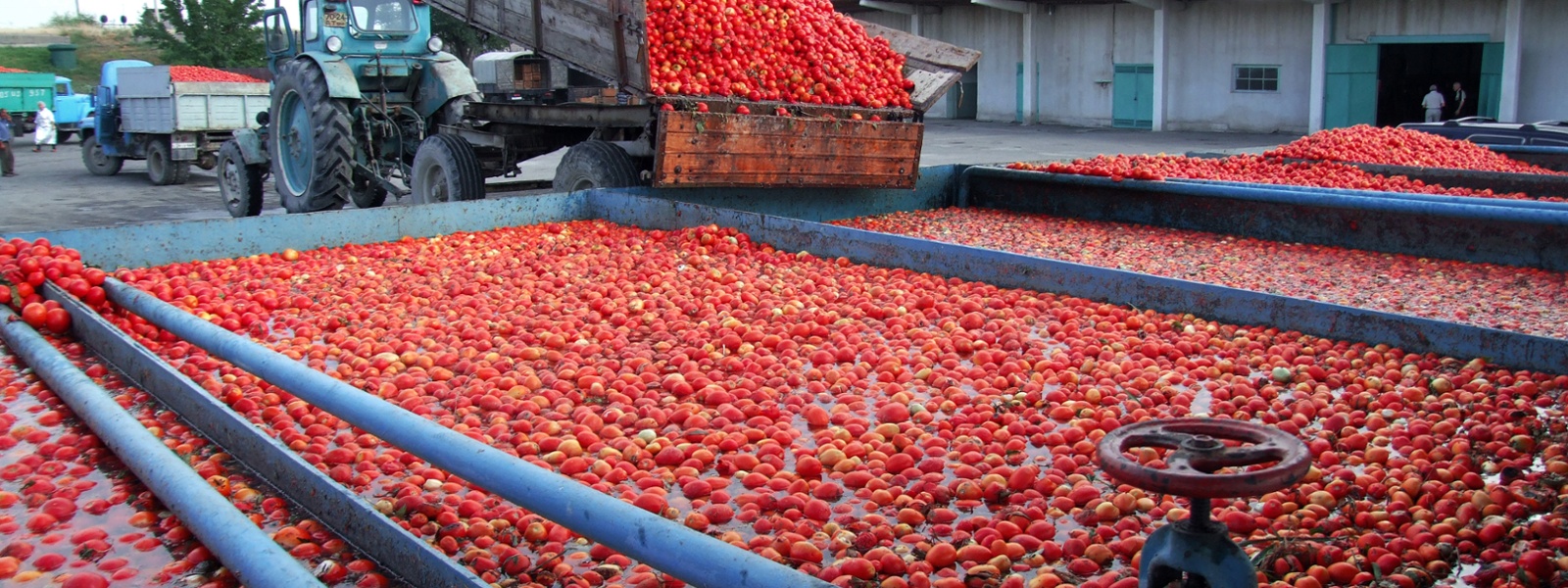With canning tomato price unset, growers mull options


By Ching Lee
With tomato processors needing to replenish their shrinking inventories, canneries are expected to offer growers higher contract prices this year to encourage increased plantings.
That the two sides have yet to agree on a final price could complicate planting decisions as farmers weigh their crop options and water budgets.
In the San Joaquin Valley, traditionally the top growing region for processing tomatoes, farmers who rely on surface-water deliveries from the federal Central Valley Project won’t know how much supply they will receive until the U.S. Bureau of Reclamation announces water allocations sometime in February.
The timing makes it difficult for farmers to sew up their planting commitments, especially for processing tomatoes, transplants of which began seeding in December, said Aaron Barcellos, who farms tomatoes in Merced County and serves as first vice chairman of the California Tomato Growers Association.
He said he expects prices will be set this week or next, but waiting this long has probably hampered some farmers from growing more tomatoes.
“A lot of us have already contracted acres to garlic or made commitments to grow cotton or other types of crops,” he said. “Some of those acres are already planted.”
Processing tomatoes remain “one of the riskiest row crops that we grow in the valley,” Barcellos said. He noted that yields have been trending lower in recent years as growers with limited or no surface water turn to using lesser-quality groundwater. The crop has also been hurt by increased insect and disease pressures and higher summer temperatures, he said.
Barcellos said contract prices need to compensate for these increased risks and for soaring production costs that have made processing tomatoes less profitable to grow.
The association, which negotiates prices for growers, is asking for $155 a ton. Processors have offered prices ranging from $120 to $145 a ton, with various premiums for late-season tomatoes. The 2022 price settled at $105 a ton. Organic tomatoes went for $165 a ton.
Barcellos said he used to grow as many as 2,000 acres of processing tomatoes but planted 500 acres last year. With the recent rains, he said he might increase plantings to about 700 to 800 acres this year but noted he’s got “a lot of permanent crop trees that we have to prioritize.”
For his row-crop acreage, he said pima cotton remains an attractive option because it uses less water. He said he expects market demand for the high-end fiber will remain strong because consumers of premium cotton products “aren’t affected by recessions, so their buying habits don’t change.”
Cotton also could be planted later in the season if it turns out that growers receive more water than the initial allocation. Tomato transplants take 45 to 60 days in the greenhouse before they’re ready for planting.
California grew 229,000 acres of processing tomatoes in 2022 and 2021—the lowest acreage since 2017 and the second lowest since 1987. Growers delivered nearly 10.5 million tons of tomatoes to processors last year, or 2% less than 2021. Even though processors initially planned for a larger crop coming from more acreage, those intentions fell short largely due to lack of irrigation water and farmers growing lower-cost crops such as cotton, according to the U.S. Department of Agriculture.
San Joaquin County grower Dino Del Carlo said if processors are “really concerned about hitting their acreage, I would think they would be offering affordable prices right now, and they really haven’t yet.” In his region, he said, he has seen a lot of tomato ground that has transitioned to growing garlic and melons. Prices for other crops such as silage, grain corn, safflower and alfalfa hay also are attractive this year, he noted.
“There’s a lot of options right now,” Del Carlo said. “Tomatoes have gotten so expensive to grow. The risk versus reward is very minimal.”
He said he plans to grow about the same amount of tomato acreage as last year. Because he farms in the delta, he said seepage from the rivers could prevent him from planting tomatoes if wet weather continues.
Fresno County grower Tim Simonich, who farms in Westlands Water District, which gets water from the Central Valley Project, said he’s using his “best guess” to determine his planting intentions as he awaits announcement of initial water allocations.
Simonich said he was originally planning to keep his tomato acreage about the same as last year but is now looking to increase it slightly with late-season tomatoes. Those plantings would go into the greenhouse in March and would be ready for planting in mid-May.
He said even though the cost to grow tomatoes is nearly twice that of cotton, he’s concerned about the market outlook for pima. With a slowing economy, he said he thinks consumption of luxury goods will drop.
“That’s the fear—that too many acres would go in, we would create too much supply, and the demand wouldn’t be there, so the price would drop too much,” Simonich said. At a meeting this month of Jess Smith & Sons, he noted, the cotton marketer said pima prices could drop to $1.75 a pound from its current price of $2.50 in a worst-case scenario.
One consideration in deciding whether to grow tomatoes or cotton is that bindweed has become “a big problem” in western Fresno County, he said. Planting Roundup Ready cotton would allow him to control the weed, whereas growers don’t have herbicide options with tomatoes.
Some of his available ground has already been planted to wheat, which he’s growing on contract for planting seed. Wheat, he said, is now one of the more profitable crops for growers, a change from two years ago when his farm lost money on it.
Based on orders the nursery has already received, Nicole Nicks, general manager of Westside Transplant in Los Banos, said she expects processing tomato acreage will go up this year. As in recent years, she said the increased acreage will likely be planted north of Highway 152, or north of Los Banos and Dos Palos in Merced County.
“I think if the growers can grow it, (if) they’ve got the water for it, and they’re going to get a good price from the canneries…they’ll definitely carve out acreage for tomatoes,” Nicks said.
She said the recent rains may help dictate how much canneries are willing to pay growers, as “typically the more water that’s available, the lower the price that the canneries pay on tomatoes.” But she said growers should factor in a higher price for their transplants due to the skyrocketing cost of natural gas this winter. The nursery originally increased transplant prices based on an anticipated 40% jump in the cost of natural gas, but the price hike is now closer to 200% to 300%, she said.
“We’ve already contracted with a lot of growers and have set pricing for the plants without this explosion of the gas prices,” Nicks said. The nursery is now considering adding a separate surcharge of $1 to $1.50 per thousand plants, she added.
(Ching Lee is an assistant editor of Ag Alert. She may be contacted at clee@cfbf.com.)




